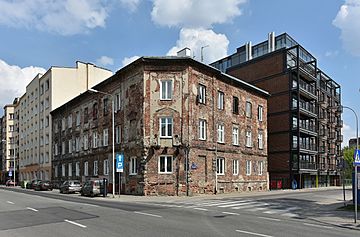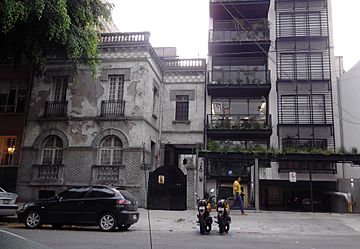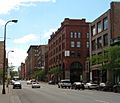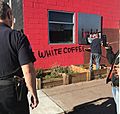Gentrification facts for kids


Gentrification is when a neighborhood changes because wealthier people and new businesses move in. This process often makes the neighborhood more expensive. It can also change who lives there and what kinds of shops are available.
Gentrification is a common and sometimes debated topic in how cities are planned. While it can make a neighborhood more valuable, it might also cause some people to move away. This is because housing and living costs can go up.
Contents
What is Gentrification?
Gentrification happens when people with higher incomes start moving into an area. These new residents might come from nearby cities or other parts of the same city. This often leads to new investment in the community.
How Neighborhoods Change
When gentrification occurs, businesses and local governments might invest more in the area. This can lead to new buildings and improved services. You might see new, more expensive homes and shops open up. This can also sometimes lead to lower crime rates.
Benefits and Challenges
One benefit of gentrification is that it can bring new life and money into a neighborhood. It can also improve things like parks and public transport. However, a big challenge is that original residents might find it hard to afford to stay. This can lead to people having to move out of their homes.
Some people worry a lot about people being forced to move. Others think that focusing too much on this fear stops us from finding ways to share the good things that come from improving city areas.
Images for kids
-
Gentrification in the US: The North Loop neighborhood, Minneapolis, Minn., is the "Warehouse District" of condominia for artists and entrepreneurs.
-
Ornate Edwardian architecture (seen here in Sutton, United Kingdom).
-
Bedford-Stuyvesant in New York, traditionally the largest black community in the US.
-
The Glockenbach district of Ludwigsvorstadt-Isarvorstadt in Munich, Germany
-
Coffee shop attacked with paint in alleged anti-gentrification attack in the St-Henri neighborhood of Montreal, January 2012.
See also
 In Spanish: Gentrificación para niños
In Spanish: Gentrificación para niños













